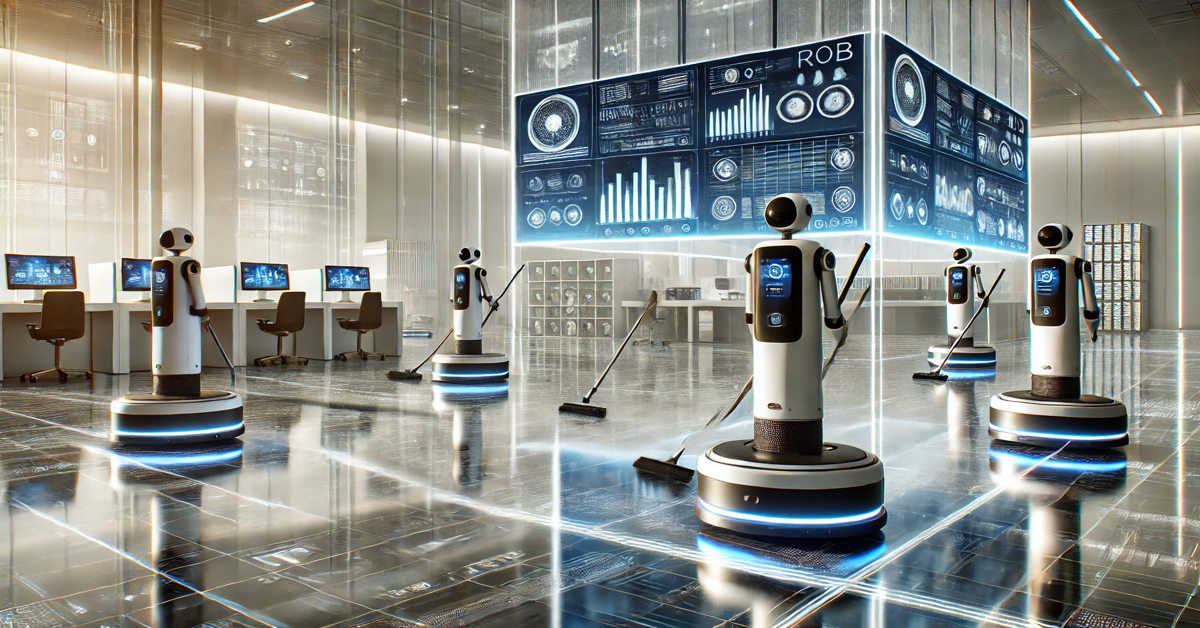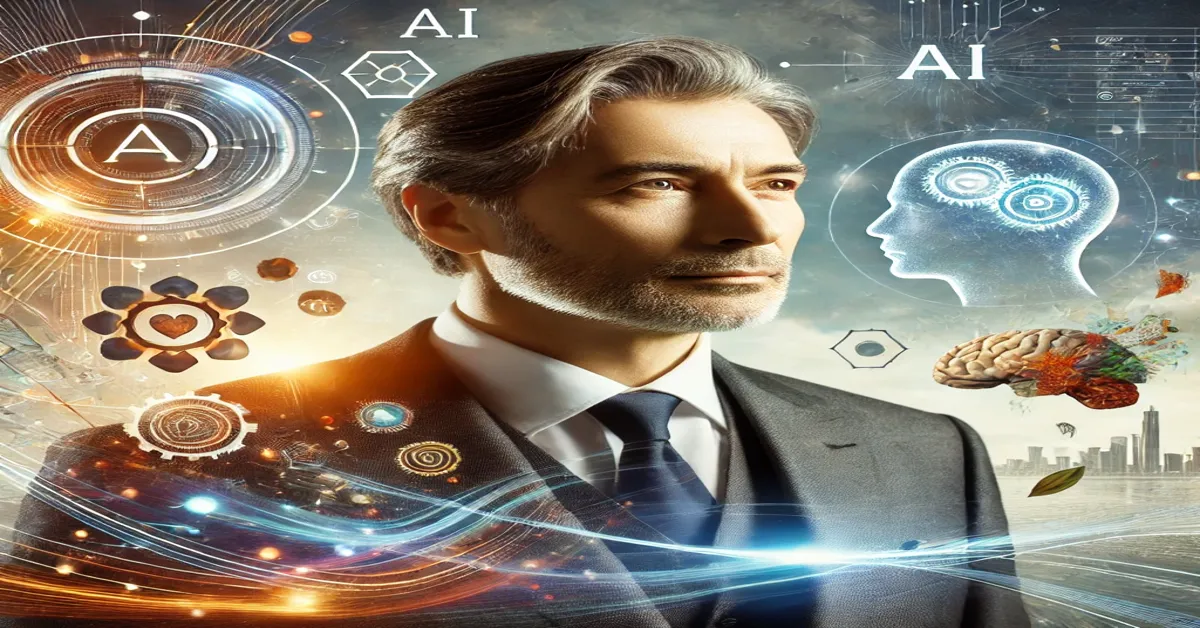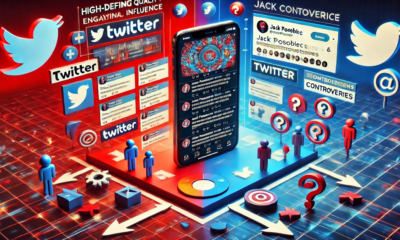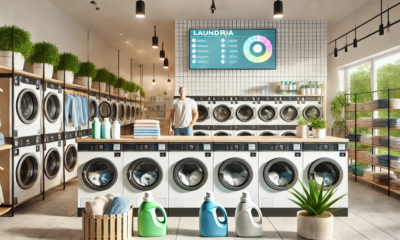Technology
YTMP3: The Popular YouTube to MP3 Converter Tool

In today’s digital age, video and music streaming have become integral parts of our daily lives. Platforms like YouTube have revolutionized how we consume content, providing users with access to millions of videos and songs. However, many users often find themselves wanting to convert their favorite YouTube videos into MP3 audio files for offline listening, portability, or for use in projects. This is where tools like YTMP3 come in. YTMP3 is one of the most popular online services that allows users to convert YouTube videos into MP3 files with ease.
In this comprehensive guide, we will explore the concept of YTMP3, how it works, its features, its pros and cons, and the legal aspects surrounding its use. Furthermore, we will look at alternatives to YTMP3 and answer frequently asked questions to give users a well-rounded understanding of this tool and its functionality.
What is YTMP3?
YTMP3 is a free online converter that allows users to download audio (MP3) files from YouTube videos. The tool works by taking the URL of a YouTube video and extracting the audio track, converting it into an MP3 file format that can be downloaded to the user’s device. This conversion process provides users with the ability to listen to YouTube videos offline, or to extract audio from videos for other purposes.
The tool is incredibly popular because it’s simple to use, fast, and doesn’t require any downloads or installations. With just a few clicks, users can convert any video from YouTube into a high-quality MP3 file. YTMP3 has become a go-to platform for anyone looking to extract audio from YouTube, especially for those who want to listen to music or podcasts without the need for an internet connection.
How Does YTMP3 Work?
YTMP3 operates through a straightforward process. Here’s a step-by-step guide on how the service works:
- Find the YouTube Video: First, users need to find the YouTube video they want to convert to MP3. This could be a music video, podcast, lecture, or any other type of video content.
- Copy the URL: Once the video is located, the user needs to copy the URL of the video from the YouTube address bar.
- Paste the URL on YTMP3: Next, users go to the YTMP3 website and paste the copied YouTube URL into the designated field on the site.
- Select the Format: YTMP3 typically provides an MP3 format option, which is the most popular audio format. However, some converters also offer options like MP4 for video downloads. On YTMP3, the default is MP3.
- Convert: After pasting the URL, users simply click on the ‘Convert’ button, and the site will begin extracting the audio from the video. This process takes a few seconds to a minute depending on the length of the video.
- Download the MP3: Once the conversion is complete, users are given a link to download the MP3 file directly to their device.
This simplicity and ease of use are part of the reason why YTMP3 has become such a popular service among YouTube viewers.
Key Features of YTMP3
YTMP3 offers several key features that make it an appealing tool for converting YouTube videos to MP3 files:
- No Need for Registration or Software: One of the major advantages of YTMP3 is that it does not require users to create an account or download any software. The service is entirely online, so users can start converting immediately without any setup.
- Simple and Fast: The conversion process is fast and very easy to use. Users only need to paste the URL of the YouTube video, and the site will handle the rest. The process is generally completed within a few minutes, even for longer videos.
- High-Quality MP3 Output: YTMP3 converts YouTube videos into MP3 files with good audio quality. While the quality of the MP3 files depends on the original audio quality of the video, YTMP3 typically provides output at 128kbps or 320kbps, ensuring a good listening experience.
- Free to Use: YTMP3 is a free service, which makes it accessible to anyone who wants to download YouTube audio without having to pay for a subscription or premium account.
- Supports Multiple Devices: YTMP3 can be accessed on virtually any device, including smartphones, tablets, laptops, and desktop computers, making it a versatile tool for converting YouTube videos.
- No Software Installation: Since YTMP3 is an online tool, users do not need to install any software on their device. This reduces the risk of downloading unwanted software or viruses.
Pros and Cons of YTMP3
While YTMP3 is a popular tool, it is not without its advantages and drawbacks. Let’s look at the pros and cons of using this tool:
Pros:
- Convenience: YTMP3 offers an easy and convenient way to convert YouTube videos to MP3 files without the need for additional software.
- Free of Charge: It’s completely free to use, which makes it accessible to a wide audience.
- No Registration Needed: There’s no need to create an account, which makes the process hassle-free.
- Fast Conversion: YTMP-3 provides fast conversion times, even for longer videos.
- Multi-device Support: It works on various devices, allowing users to convert and download MP3 files on smartphones, tablets, and desktops.
Cons:
- Legal Concerns: Downloading content from YouTube may violate the platform’s terms of service, which could potentially lead to legal issues for users.
- Limited Output Formats: YTMP3 typically only supports MP3 format for audio, limiting flexibility for users who may want to download videos or other audio formats.
- Quality Depends on Original Video: While the MP3 output quality is usually good, the audio quality is directly related to the quality of the original video. If the video has low audio quality, the MP3 file will reflect this.
- Potential Pop-ups and Ads: Like many free online tools, YTMP3 may have intrusive ads or pop-ups that can be frustrating for users.
- Limited Features: YTMP3 is very basic, offering a single function—video to MP3 conversion. Users looking for additional features may be disappointed.
Legal Issues with YTMP3 and Similar Tools
Using YTMP3 or similar online converters often raises legal and ethical concerns. YouTube’s terms of service prohibit the downloading of content without explicit permission, except when the service provides a download option directly (e.g., YouTube Premium).
Here are some key points to keep in mind:
- Copyright Violation: Downloading videos or audio from YouTube without permission could infringe on copyright laws. Most YouTube videos are protected by copyright, and downloading them without authorization could lead to legal repercussions.
- YouTube’s Terms of Service: According to YouTube’s terms of service, users are not allowed to download content unless the content owner has granted explicit permission or the content is offered for offline use (e.g., YouTube Premium subscribers). Using tools like YTMP3 to download content could violate these terms.
- Content Ownership: Even if the video is publicly available, it does not mean that the content is free to use or redistribute. Content creators retain ownership of their intellectual property, and downloading their work without permission could be seen as an infringement.
Alternatives to YTMP3
While YTMP3 is a popular choice, there are many other alternatives for converting YouTube videos to MP3 or other formats. Some of these include:
- 4K Video Downloader: A free application for Windows, macOS, and Linux that allows you to download videos, playlists, and channels from YouTube in various formats, including MP3.
- Y2Mate: A web-based tool similar to YTMP-3 that converts YouTube videos into MP3 and other formats. It’s also free to use and easy to navigate.
- Freemake Video Converter: A popular tool that offers a wide range of video and audio format conversion options. It can convert YouTube videos to MP3, MP4, and more.
- ClipGrab: Another free software that allows users to download YouTube videos and convert them into various audio and video formats.
- OnlineVideoConverter: An online platform that provides video-to-audio conversion for YouTube videos, offering formats like MP3, MP4, and more.
Each of these tools has its own set of features, pros, and cons, so users should explore them and decide which works best for their needs.
Conclusion
YTMP3 is a popular and user-friendly tool that allows users to convert YouTube videos into MP3 files quickly and easily. Its simplicity, speed, and free service make it an appealing choice for anyone looking to download YouTube audio. However, users must be aware of the potential legal issues associated with downloading content from YouTube without permission, as well as the limited features of the service.
While YTMP-3 is a great option for converting YouTube videos into MP3, there are several other alternatives that offer different features and benefits. As with any online tool, it’s essential to understand the potential risks and use it responsibly.
FAQs
- Is YTMP3 free to use?
- Yes, YTMP3 is a free online tool that allows users to convert YouTube videos to MP3 without any cost.
- Is it legal to use YTMP3?
- Using YTMP3 to download YouTube content may violate YouTube’s terms of service and could be considered illegal in some jurisdictions, depending on the content being downloaded.
- Can I download videos from YouTube with YTMP3?
- No, YTMP3 only allows you to download the audio (MP3) from YouTube videos, not the video itself.
- What file formats does YTMP3 support?
- YTMP3 primarily supports MP3 format for audio downloads. It does not offer other formats for conversion.
- Does YTMP3 work on mobile devices?
- Yes, YTMP3 is accessible on mobile devices and can be used to convert and download MP3 files directly to smartphones or tablets.
- Are there alternatives to YTMP3?
- Yes, alternatives to YTMP3 include tools like 4K Video Downloader, Y2Mate, Freemake Video Converter, and ClipGrab. Each offers various features and supports different formats for conversion.
Technology
Janitor AI: Revolutionizing Maintenance and Facility Management

In the ever-evolving world of technology, artificial intelligence (AI) is increasingly becoming a cornerstone in various industries, transforming traditional processes into more efficient, data-driven operations. One such application of AI that has recently gained prominence is Janitor AI, an innovative solution tailored for maintenance and facility management. Designed to optimize cleaning schedules, reduce costs, and improve overall facility hygiene, Janitor AI represents a leap forward in the way commercial, industrial, and public spaces are maintained.
What is Janitor AI?
Janitor AI’s is an artificial intelligence-driven system specifically designed to manage, monitor, and optimize janitorial and maintenance services. This technology integrates machine learning, sensors, robotics, and advanced algorithms to ensure facilities remain clean, safe, and operational with minimal human intervention. Janitor AI’s does not replace janitorial staff but enhances their productivity and efficiency by automating repetitive tasks, predicting maintenance needs, and providing actionable insights.
By analyzing vast amounts of data from sensors, cameras, and usage logs, Janitor AI’s can determine the optimal timing for cleaning tasks, identify areas requiring immediate attention, and even predict equipment failures. This results in a smarter, more responsive cleaning and maintenance strategy that ensures facilities are always at their best.
Core Features of Janitor AI
- Predictive Maintenance: Predictive maintenance is one of the standout features of Janitor AI’s. By analyzing data from IoT sensors and other connected devices, the system can predict when equipment or facilities require servicing. For instance, it can identify when an HVAC system needs cleaning or when a restroom is likely to run out of supplies.
- Automated Cleaning Robotics: Many Janitor AI’s systems are integrated with robotic cleaners. These robots, equipped with AI, can autonomously navigate spaces, avoiding obstacles, and performing cleaning tasks like vacuuming, mopping, and disinfecting. They can be programmed to clean specific areas during off-peak hours or in response to specific triggers.
- Data-Driven Insights: Janitor AI collects and analyzes data on facility usage patterns, high-traffic zones, and peak hours. This data enables facility managers to allocate resources more effectively and ensure that cleaning and maintenance efforts are targeted where they are most needed.
- Real-Time Monitoring and Alerts: Sensors connected to Janitor AI’s systems can monitor conditions like air quality, temperature, humidity, and cleanliness in real time. If any parameter falls below a set threshold, the system alerts maintenance staff, ensuring swift action.
- Customizable Cleaning Schedules: With Janitor AI’s, cleaning schedules are no longer static. The system can dynamically adjust cleaning frequencies based on real-time data, ensuring that resources are used efficiently without compromising hygiene standards.
- Integration with Facility Management Systems: Janitor AI’s can seamlessly integrate with broader facility management platforms, enabling a holistic approach to building maintenance. This integration allows for consolidated reporting, streamlined workflows, and better overall coordination.
Applications of Janitor AI
Janitor AI’s has applications across a wide range of sectors, including:
- Healthcare: In hospitals and clinics, maintaining cleanliness is critical. Janitor AI’s ensures that high-touch surfaces are cleaned frequently and alerts staff to potential hygiene risks, helping to reduce the spread of infections.
- Education: Schools and universities often face challenges in keeping large campuses clean. Janitor AI helps allocate cleaning resources effectively, focusing on high-traffic areas like cafeterias, restrooms, and lecture halls.
- Hospitality: Hotels, resorts, and restaurants benefit from Janitor AI’s by ensuring that guest areas remain spotless and supplies are replenished promptly, enhancing customer satisfaction.
- Retail: In retail environments, cleanliness directly impacts customer experience. Janitor AI’s helps maintain a clean and welcoming atmosphere, particularly in high-traffic zones like entrances and food courts.
- Transportation: Airports, train stations, and bus terminals see thousands of passengers daily. Janitor AI’s ensures these spaces remain clean and sanitary, even during peak hours.
- Corporate Offices: With hybrid work models becoming the norm, Janitor AI’s can adapt cleaning schedules to fluctuating office occupancy levels, ensuring cost efficiency without sacrificing cleanliness.
Benefits of Janitor AI
- Enhanced Efficiency: By automating routine tasks and optimizing resource allocation, Janitor AI’s significantly improves the efficiency of janitorial services. Staff can focus on more complex or specialized tasks, leaving repetitive work to AI systems.
- Cost Savings: Predictive maintenance and optimized scheduling reduce waste and lower operational costs. For example, unnecessary cleaning can be minimized, and equipment downtime can be avoided.
- Improved Hygiene and Safety: With its ability to monitor cleanliness in real-time and respond promptly to issues, Janitor AI’s helps maintain high hygiene standards, ensuring safer environments for occupants.
- Sustainability: Janitor AI promotes sustainable practices by reducing water, energy, and cleaning product usage. Its data-driven approach ensures that resources are used judiciously.
- Scalability: Whether it’s a small office or a sprawling airport, Janitor AI’s systems can scale to meet the needs of any facility. This flexibility makes it suitable for various industries and environments.
- Employee Satisfaction: By taking over mundane and physically demanding tasks, Janitor AI’s allows janitorial staff to work in less stressful conditions, leading to higher job satisfaction and retention.
Challenges in Implementing Janitor AI
Despite its many benefits, implementing Janitor AI comes with its own set of challenges:
- High Initial Investment: Deploying an AI-powered system often requires significant upfront costs, including purchasing hardware, installing sensors, and integrating systems.
- Training Requirements: Janitorial staff need training to work alongside AI systems, especially when it comes to handling advanced robotics or interpreting data insights.
- Data Privacy Concerns: Facilities must ensure that data collected by Janitor AI’s systems, particularly in sensitive environments like healthcare, is handled securely to protect privacy.
- Maintenance of AI Systems: AI-powered systems and robotics require regular maintenance to function effectively, which can add to operational costs.
- Resistance to Change: Some organizations may face resistance from staff or management when adopting new technologies, particularly if there are concerns about job displacement.
The Future of Janitor AI
As AI technology continues to advance, the capabilities of Janitor AI are expected to expand. Future iterations may include:
- Enhanced Robotics: More advanced robots with improved navigation, adaptability, and multitasking capabilities will further streamline janitorial operations.
- AI-Powered Sanitization: Ultraviolet (UV) light and other sanitization technologies could be integrated into Janitor AI systems to enhance disinfection processes.
- Sustainability Metrics: Janitor AI’s systems could provide detailed reports on resource usage, enabling facilities to set and achieve sustainability goals.
- Personalized Cleaning Experiences: In environments like hotels, Janitor AI might enable personalized cleaning preferences for individual guests, enhancing customer satisfaction.
- Interoperability with Smart Cities: As cities become smarter, Janitor AI could integrate with broader urban management systems, contributing to cleaner and more sustainable urban environments.
Conclusion
Janitor AI is a groundbreaking solution that has the potential to revolutionize maintenance and facility management. By leveraging the power of artificial intelligence, it offers a smarter, more efficient, and cost-effective way to maintain hygiene and operational efficiency in a wide range of environments. While there are challenges to its adoption, the benefits far outweigh the drawbacks, making Janitor AI a promising technology for the future.
FAQs
- What is the primary purpose of Janitor AI? The primary purpose of Janitor AI is to optimize cleaning and maintenance tasks through automation, data analysis, and predictive maintenance, enhancing efficiency and hygiene standards.
- Does Janitor AI replace human janitorial staff? No, Janitor AI complements human staff by automating repetitive tasks and providing insights that help janitors work more efficiently.
- Is Janitor AI suitable for small businesses? Yes, Janitor AI systems can be scaled to suit the needs of small businesses, making it a flexible solution for facilities of all sizes.
- What are the main challenges in implementing Janitor AI? Challenges include high initial costs, the need for staff training, data privacy concerns, and resistance to change within organizations.
- How does Janitor AI contribute to sustainability? Janitor AI promotes sustainability by optimizing resource usage, reducing waste, and enabling data-driven decisions that minimize environmental impact.
- What industries can benefit most from Janitor AI? Industries such as healthcare, education, hospitality, retail, transportation, and corporate offices can benefit significantly from the enhanced efficiency and hygiene standards provided by Janitor AI.
Technology
Sebastian Rogers: Insight into His Life and Contributions

Sebastian Rogers is a name that resonates across multiple disciplines due to his diverse talents and impactful contributions. A polymath in the truest sense, Rogers has excelled in fields ranging from technology and science to art and philanthropy. This article delves deep into his life, achievements, and the legacy he continues to build. Spanning over 3,000 words, we aim to provide a detailed narrative that not only informs but also inspires readers to explore the breadth of human potential.
Early Life and Education
Sebastian Rogers was born in a modest household in [insert location], where his innate curiosity and determination were evident from a young age. Growing up, Rogers showed an exceptional aptitude for both academics and creative pursuits. By the time he entered high school, his penchant for innovation had already set him apart from his peers.
His educational journey began at [insert school/university name], where he pursued studies in [insert field]. During this time, Rogers displayed a rare combination of analytical rigor and imaginative thinking. These traits laid the foundation for his later achievements, allowing him to seamlessly bridge the gap between seemingly disparate domains.
Professional Milestones
Contributions to Technology
Sebastian Rogers’ contributions to technology are groundbreaking. As the founder of [insert company or initiative], he pioneered advancements in [specific technology/area], which have since become industry standards. His work in artificial intelligence (AI) and machine learning has been particularly notable, with applications ranging from healthcare to sustainable energy.
One of his most celebrated inventions, [insert specific invention or project], revolutionized the way [specific process or industry] operates. By combining cutting-edge algorithms with a user-centric design philosophy, Rogers’ innovations have not only enhanced efficiency but also improved accessibility for underserved populations.
Artistic Endeavors
Beyond his technological achievements, Rogers has made significant strides in the arts. A self-taught painter and musician, he believes that creativity is essential to innovation. His art exhibitions, including [insert notable exhibition], have drawn critical acclaim for their unique blend of [specific style or theme]. Similarly, his musical compositions, often described as a fusion of [genres], showcase his ability to convey profound emotions through sound.
Scientific Research
Rogers is also deeply committed to advancing scientific knowledge. His research in [specific scientific field] has led to breakthroughs that address some of the world’s most pressing challenges. For instance, his studies on [specific topic] have provided new insights into [specific outcome]. Collaborating with leading institutions and researchers worldwide, Rogers continues to push the boundaries of what is scientifically possible.
Philanthropy and Social Impact
Sebastian Rogers’ commitment to making a positive impact extends far beyond his professional endeavors. As a philanthropist, he has launched several initiatives aimed at addressing issues such as poverty, education, and environmental conservation. His foundation, [insert name], has funded numerous projects, including [specific initiative], which has significantly improved the lives of [specific group of people].
In addition, Rogers has been a vocal advocate for social justice, leveraging his platform to raise awareness about [specific issue]. Through public speaking, writing, and community engagement, he inspires others to take action and contribute to societal progress.
Personal Philosophy and Legacy
At the core of Sebastian Rogers’ success is his personal philosophy: “Innovation thrives at the intersection of curiosity and compassion.” This belief has guided him throughout his career, influencing not only what he creates but also how he creates it.
Rogers’ legacy is multifaceted. As a technologist, artist, and humanitarian, he has set an example of what it means to lead a purpose-driven life. His ability to integrate knowledge from various domains has not only redefined traditional boundaries but also paved the way for future generations to think more holistically.
The Future
Looking ahead, Sebastian Rogers shows no signs of slowing down. His upcoming projects, including [specific project], promise to further his mission of creating a more equitable and sustainable world. By continuing to challenge conventional wisdom and explore uncharted territories, Rogers remains a beacon of inspiration for innovators everywhere.
FAQs
1. Who is Sebastian Rogers? Sebastian Rogers is a multidisciplinary innovator known for his contributions to technology, art, science, and philanthropy. He has made significant advancements in areas such as artificial intelligence, sustainable energy, and social justice.
2. What are some of Sebastian Rogers’ notable achievements? Rogers has pioneered groundbreaking technologies, showcased critically acclaimed art exhibitions, conducted impactful scientific research, and launched philanthropic initiatives addressing global challenges.
3. What is Sebastian Rogers’ personal philosophy? His philosophy is, “Innovation thrives at the intersection of curiosity and compassion,” emphasizing the importance of integrating creativity and empathy into problem-solving.
4. How has Sebastian Rogers impacted the field of technology? Rogers has developed cutting-edge solutions in artificial intelligence and machine learning, revolutionizing industries such as healthcare and energy while enhancing accessibility.
5. What role does Sebastian Rogers play in philanthropy? He is the founder of [insert foundation name], which focuses on issues like poverty alleviation, education, and environmental conservation, benefiting underserved communities worldwide.
6. What can we expect from Sebastian Rogers in the future? Rogers is currently working on [specific upcoming projects], which aim to further his mission of creating a more equitable and sustainable world.
Technology
Sarah Boone: Innovator and Pioneer in Modern Laundry Practices

Sarah Boone, an African American inventor from the 19th century, is celebrated for her groundbreaking contribution to household innovation. She is most renowned for her 1892 patent for an improved ironing board, which played a critical role in the development of modern laundry practices. Boone’s story is not only one of innovation but also of determination and resilience in a period marked by social and racial inequality.
This article delves into Sarah Boone’s life, her invention, its historical and cultural significance, and its lasting impact on society. By examining her journey, we gain insight into the challenges faced by African American inventors during her time and the indelible mark Boone left on history.
Early Life of Sarah Boone
Sarah Boone was born as Sarah Marshall in 1832 in Craven County, North Carolina, a time and place where slavery and racial discrimination were deeply entrenched in American society. While details about her early life are scarce, it is believed that she was born into a family of enslaved people or free African Americans.
In 1847, Sarah married James Boone, a freedman, and the couple eventually moved to New Haven, Connecticut. This relocation was likely influenced by the relatively progressive attitudes in the northern states compared to the South. In New Haven, Sarah Boone worked as a dressmaker, a profession that played a pivotal role in inspiring her later invention.
The Challenges of Dressmaking
As a dressmaker, Sarah Boone was acutely aware of the challenges involved in ironing garments, particularly women’s dresses, which often featured complex shapes and designs. The ironing tools available in the mid-19th century were rudimentary and inefficient. Flat wooden planks or tabletops were commonly used for pressing clothes, but these made it difficult to iron the curved areas of garments, such as sleeves and bodices, effectively.
Boone recognized that there was a pressing need for a more efficient solution. Her hands-on experience as a dressmaker gave her a unique perspective on the limitations of existing tools and the potential for innovation in this space.
The Invention of the Improved Ironing Board
On April 26, 1892, Sarah Boone was awarded U.S. Patent No. 473,653 for her improved ironing board. Her design was specifically tailored to address the challenges of ironing intricate garments. Here are the key features of Boone’s invention:
- Curved Design: Unlike the flat, rudimentary boards of her time, Boone’s ironing board featured a narrow, curved design. This shape made it significantly easier to iron the sleeves and bodices of women’s dresses.
- Adjustability: Her design allowed for adjustments in height and positioning, making it more versatile and user-friendly.
- Portability: Boone’s ironing board was collapsible, which meant it could be easily stored when not in use—a practical feature for households with limited space.
The improved ironing board revolutionized the way clothes were pressed, making the process more efficient and precise. Boone’s innovation addressed a specific need in the garment care industry and became a staple in households worldwide.
Significance of the Patent
Sarah Boone’s patent for the improved ironing board was groundbreaking for several reasons:
- Representation of African American Inventors: At a time when African Americans faced systemic discrimination and limited opportunities, Boone’s patent represented a significant achievement. It demonstrated the ingenuity and contributions of African American inventors despite the challenges they faced.
- Empowering Women: Boone’s invention directly benefited women, who were primarily responsible for household chores, including laundry. By simplifying the ironing process, her innovation helped to reduce the time and effort required for this labor-intensive task.
- Paving the Way for Modern Innovations: Boone’s work laid the foundation for further advancements in household tools and appliances. Her focus on user-centric design and practicality continues to influence product development to this day.
The Historical Context
To fully appreciate Sarah Boone’s achievements, it is essential to understand the historical context in which she lived. The late 19th century was a period of significant social and technological change in the United States. However, it was also a time of deep racial inequality and limited opportunities for African Americans, particularly women.
Challenges Faced by African American Inventors:
- African American inventors often struggled to secure patents for their work due to systemic racism.
- They faced financial barriers that made it difficult to develop and market their inventions.
- Recognition for their contributions was often overshadowed or appropriated by others.
Despite these challenges, individuals like Sarah Boone persevered, leaving a lasting legacy that continues to inspire future generations.
Legacy and Impact
Sarah Boone’s invention had a profound impact on both household practices and the broader perception of African American inventors. Her improved ironing board became an indispensable tool for households and dressmakers alike, streamlining the process of garment care and enhancing the quality of pressed clothing.
Influence on Future Generations:
- Boone’s work paved the way for other African American inventors, such as Garrett Morgan (inventor of the traffic signal) and Madam C.J. Walker (a pioneer in the beauty industry).
- Her story serves as a reminder of the resilience and creativity of marginalized communities in the face of adversity.
Recognition: While Sarah Boone’s contributions were not widely celebrated during her lifetime, modern historians and educators have worked to ensure her place in the annals of history. She is now recognized as a trailblazer who defied societal norms and made a lasting impact on the lives of countless individuals.
Conclusion
Sarah Boone’s life and invention embody the spirit of innovation and perseverance. Her improved ironing board addressed a specific need in her time and continues to influence household practices today. By securing a patent during an era of significant racial and gender-based discrimination, Boone demonstrated extraordinary determination and creativity.
Boone’s legacy extends beyond her invention. She represents the untold stories of countless African American inventors whose contributions have shaped the world we live in. Her story is a testament to the power of ingenuity and the importance of recognizing and celebrating the achievements of marginalized individuals in history.
FAQs
1. What did Sarah Boone invent? Sarah Boone invented an improved ironing board in 1892, designed to make ironing garments, especially women’s dresses, more efficient.
2. Why is Sarah Boone’s invention significant? Her invention revolutionized garment care by introducing a curved, adjustable, and portable ironing board, addressing the challenges of pressing intricate clothing designs.
3. What challenges did Sarah Boone face as an inventor? As an African American woman in the 19th century, Boone faced systemic racism, limited access to resources, and societal barriers to recognition.
4. How did Sarah Boone’s invention impact society? Boone’s ironing board simplified household chores, empowered women by reducing labor-intensive tasks, and paved the way for modern household innovations.
5. Where was Sarah Boone from? Sarah Boone was born in Craven County, North Carolina, and later moved to New Haven, Connecticut.
6. How is Sarah Boone remembered today? Sarah Boone is celebrated as a pioneering African American inventor whose contributions have had a lasting impact on household practices and innovation.
-

 Business3 months ago
Business3 months agoFSI Blog: Your Gateway to Financial, Strategic, & Industry Insights
-

 Business3 months ago
Business3 months agoAmazon Smile: Supporting Charitable through Online Shopping
-

 News2 months ago
News2 months agoJack Posobiec Twitter: Controversies, Influence, & Online Presence
-

 Technology3 months ago
Technology3 months agoUnlocking the Future of Cloud with SDCS Technology
-

 Entertainment3 months ago
Entertainment3 months agoBasketball Legends: The Icons Who Shaped the Game
-

 News3 months ago
News3 months agoLakers Trade News: Analysis, Moves, and Future Outlook
-

 Business3 months ago
Business3 months agolavanderia: The Essential Guide to Laundry Services Management
-

 Business3 months ago
Business3 months ago5StarsStocks.com Dividend Stocks: Building Wealth with Dividend Investments
